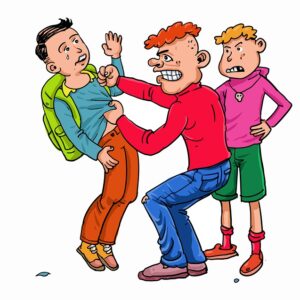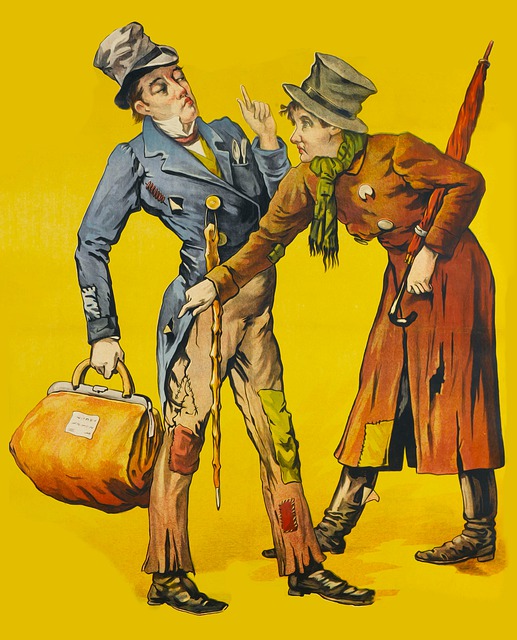Many people ask: “What is realistic fiction?” That’s a question that is not easy to define. Realistic fiction is a type of writing that portray characters and events in a way that seems natural and believable. It can be challenging to distinguish realistic fiction from other genres, such as memoirs or historical fiction, but some key characteristics set it apart.
This blog post will discuss the terms “realistic fiction” and “literary realism,” give some examples of famous works of realistic fiction, and outline the key elements that make it unique.
Realistic fiction is a genre of literature based on reality and everyday life
Literary realism
Literary realism is a subgenre of realistic fiction that accurately represents social issues and actual problems. It often deals with controversial topics such as poverty, race, and class. In literature, realism is a style that presents accurate, objective descriptions of the world. Realist writers aim to represent everyday life and its complexities precisely as they are, without embellishment or exaggeration. It can be challenging, requiring excellent observational skills and attention to detail.
One of the most celebrated realist writers is Anton Chekhov, who was known for his insightful and humorous depictions of Russian life. His characters are often ordinary people caught up in difficult circumstances. Other famous realist writers include George Eliot, Gustave Flaubert, and Mark Twain.
Realistic fiction
Realistic fiction often has elements of other genres, such as romance or mystery, but the focus is on the characters and their real problems.
Some well-known realistic fiction novels are To Kill a Mockingbird by Harper Lee, The Catcher in the Rye by J.D. Salinger, and The Great Gatsby by F. Scott Fitzgerald.
Several key elements make realistic fiction captivating
– First, realistic fiction deals with relatable topics that readers can connect to on a personal level.
– Second, the characters in realistic fiction are usually everyday people facing real challenges, allowing readers to see themselves in the characters and empathize with their struggles.
– Third, realistic fiction often occurs in familiar settings, such as small towns or suburbs, making the stories more relatable and real.
– Fourth, realistic fiction typically has a strong focus on character development. Readers can watch the characters grow and change throughout the story.
– Fifth, realistic fiction often has an actual plot, which means that the story’s events could happen to anyone.
– Finally, realistic fiction is usually written in a natural style, meaning the language is simple and easy to understand.
Overall, realistic fiction is a genre that readers can easily connect to.
The characters in realistic fiction are often average people who deal with average problems

Average people dealing with average problems are relatable and enjoyable to read about. We can all identify with the struggles that they go through, and it’s nice to know that we’re not the only ones who feel this way.
While it’s true that the characters in realistic fiction are dealing with average problems, that doesn’t mean their lives are boring or mundane. The best realistic fiction can be just as compelling and suspenseful as any other fiction genre.
The key to realistic fiction is focusing on the small moments between the big ones. Show how they interact with their families, friends, and neighbours. Reveal the hidden battles they fight every day. By grounding your story in reality, you create a sense of authenticity that readers can connect with on a deeper level.
The plot of a realistic fiction story is often based on something that could happen in real-life
To Kill a Mockingbird is a novel about racism and injustice in the American South during the 1930s. The story is told from the point of view of Scout, a six-year-old girl.
The Catcher in the Rye is the story of Holden Caulfield, a teenage boy who is kicked out of boarding school and becomes a wanderer in New York City.
The Fault in Our Stars is a novel about two teenage cancer patients who fall in love.
Each of these novels is an example of realistic fiction.
The ending of realistic fiction stories is usually real, too. While To Kill a Mockingbird has a happy ending, many realistic fiction stories do not.
Settings in realistic fiction stories are generally based on actual places
– To Kill a Mockingbird is set in the fictional town of Maycomb, Alabama, in the 1930s.
– The Fault in Our Stars by John Green is set in Indianapolis, Indiana.
– The Perks of Being a Wallflower by Stephen Chbosky is set in Pittsburgh, Pennsylvania in the early 1990s.
– Looking for Alaska by John Green is set in Alaska, Alabama, and Florida in the early 2000s.
Language and dialogue in realistic fiction are often natural and believable

Slang and jargon are often used in realistic fiction to make the dialogue more realistic
– You may write realistic fiction in the first person or third person. The first-person point of view is when one character narrates the story. The third person point of view is when a character, not a character in the story, is the narrator.
Some common themes in realistic fiction are themes of family, friends, school, growing up, identity, love, relationships, and death.
An example of realistic fiction is The Catcher in the Rye by J.D. Salinger. Holden Caulfield, the main character, uses a lot of slang throughout the novel.
Other examples of realistic fiction are:
– The Outsiders by S.E. Hinton is set in Tulsa, Oklahoma. It is the story of a group of boys forced to fend for themselves after their parents are killed in a gas explosion.
The book is full of action and adventure and has been banned in many schools because of its violent content. Despite its dark themes, The Outsiders is a popular book with teenagers because it tells the story of teenage rebellion and coming of age.
– The Hunger Games by Suzanne Collins is set in the fictional country of Panem. The story follows a girl named Katniss Everdeen who is forced to compete in a televised game where children fight to the death.
Collins has said that the Capitol, which hosts the Hunger Games, is based in Washington D.C. and that each of the twelve districts in Panem is based on different regions of America. For example, District 12 is Appalachia and District 11 is the cotton belt. Collins has said that she was inspired by watching reality TV shows like Survivor and Big Brother while writing the novel.
The Perks of Being a Wallflower by Stephen Chbosky is set in Pittsburgh, Pennsylvania, in the 1990s. It tells the story of a high school freshman, Charlie, and his struggles to navigate through his first year of high school. The novel explores friendship, family, mental health, and sexuality themes.
One of the things that makes this book so special is that it’s semi-autobiographical. Stephen Chbosky wrote it based on his experiences as a high school student. The themes of isolation, depression, and fitting in are very personal to him, and you can feel that in writing.
Realistic fiction often has characters that are easy for readers to relate to
Characters might have the same interests as the reader or be going through similar situations where their stories resemble real life. Maybe their social or personal events portrayed are identical. In any of these cases, the character will seem to be a realistic character.
Here are a few realistic fiction examples of real characters

– In The Kite Runner by Khaled Hosseini, readers are introduced to the character Amir, a middle-class Afghan boy living in the 1970s. Amir is realistic because he is imperfect. He makes mistakes and has shortcomings like everyone else. But Amir also has unique qualities that make him memorable and exciting.
Amir is brave and determined, even in danger and adversity. He’s also intelligent and insightful, providing readers with valuable insights into Afghan culture and society. And most importantly, Amir is relatable. We can all relate to his struggles and triumphs as he tries to find his place in the world through life.
– One of the most beautifully written and realistic characters I’ve ever read about was Hamlet from Shakespeare’s play Hamlet. He is multifaceted, conflicted, and immensely human in his failings. He is a character that we can all relate to on some level because he is so flawed and complex.
– Another excellent example of a realistic character is Alfred, an aging father and the protagonist in the novel The Corrections by Jonathan Franzen. Alfred is flawed and complex and yet feels like someone you could know in real life. He’s struggling with several personal issues, including alcoholism and depression, but he’s also brilliant and wise. You understand his motivations and see the world through his eyes, making him a compelling character.
Realistic fiction stories typically have a moral or lesson to teach readers
Realistic fiction is a genre of literature that tells real stories. These stories can be about anything, but they typically have characters that readers can relate to. The stories might be set in the present or past, but they often deal with issues that are still relevant today.
Conclusion
Realistic fiction is a genre of literature that readers of all ages can enjoy. Realistic fiction is an excellent choice if you’re looking for a book that will make you laugh, cry, and think. Realistic fiction has become increasingly popular in recent years, and many novels fall into this genre. Some examples include The Fault in Our Stars by John Green, If I Stay by Gayle Forman, and Eleanor & Park by Rainbow Rowell.
I hope this helped clear up any confusion about realistic fiction. If you have any questions, feel free to leave a comment below.
Thanks for reading!
If you’re working on your first novel and are looking for more help with your writing, please check out my other articles at https://ullahakanson.com/blog/
Best of luck with your writing!
Ulla

